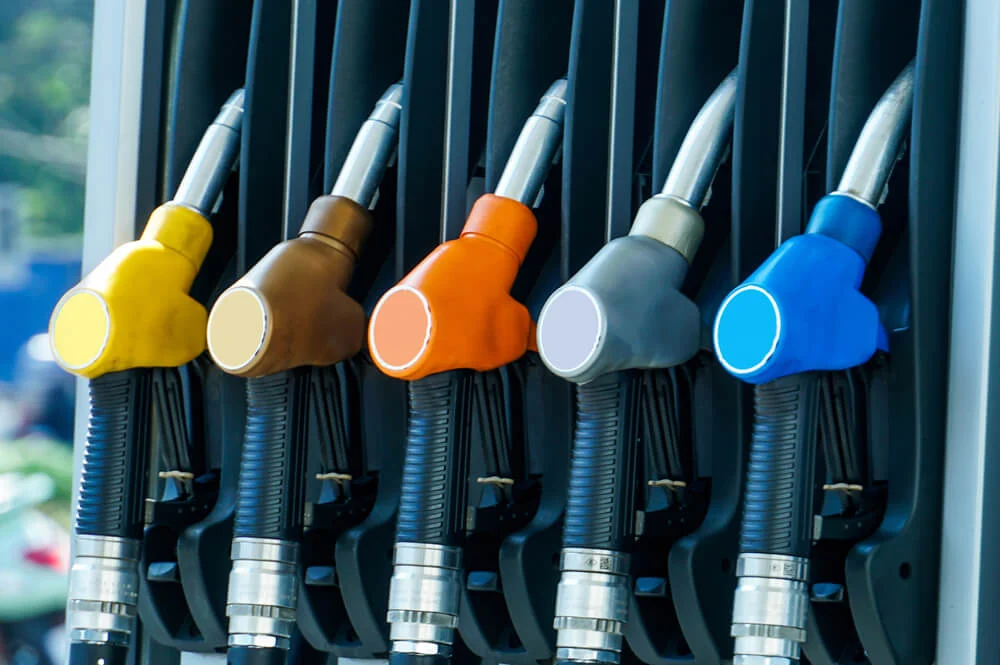Real-World Fuel Efficiency Tests: Diesel vs Regular Gas
Understanding Real-World fuel efficiency is essential for drivers who want to maximize mileage, reduce costs, and minimize environmental impact. While laboratory ratings provide a baseline, actual on-road performance can vary significantly based on conditions, vehicle type, and driving habits.

This article dives deep into Real-World fuel efficiency tests comparing diesel and regular gasoline vehicles, offering data-driven insights and practical guidance for automotive enthusiasts.
The Importance of Real-World Fuel Efficiency Testing
Manufacturers often advertise fuel economy based on standardized test cycles. However, these controlled environments rarely match everyday driving. Real-World fuel efficiency tests bridge that gap by evaluating vehicles under conditions that drivers actually encounter, including:
- Varying traffic patterns (stop-and-go, highway cruising)
- Diverse temperature extremes (summer heat, winter cold)
- Mixed terrain (flat highways, rolling hills, urban streets)
- Load and cargo differences (passenger weight, luggage)
By focusing on Real-World fuel performance, drivers gain a clear understanding of what to expect at the pump, leading to better budget planning and smarter vehicle choices.
Test Methodology for Real-World Fuel Comparisons
Conducting accurate Real-World fuel tests requires a rigorous, repeatable methodology. Key steps include:
- Vehicle Selection
- Route Planning
- Consistent Driving Protocol
- Precise Fuel Measurement
- Data Logging and Analysis
Vehicle Selection
To compare diesel and regular gasoline fairly, tests included:
- Compact Crossover: Diesel-powered vs. gasoline variant
- Mid-Size Sedan: Turbo-diesel vs. standard 2.0L gasoline
- Full-Size Pickup: Diesel turbo V6 vs. gasoline V8
All vehicles were in good mechanical condition, with maintenance up to date and tires inflated to manufacturer specifications.
Route Planning
Each vehicle completed a Real-World fuel test on:
- Urban Loop (20 miles): Stoplights, city traffic, 30–45 mph
- Highway Stretch (50 miles): Steady cruise at 65 mph
- Mixed Terrain (30 miles): Rolling hills, occasional steep grades
This 100-mile circuit was chosen to mimic typical driving patterns and was repeated three times per vehicle to ensure consistency.
Consistent Driving Protocol
Drivers adhered to:
- Smooth Acceleration and Braking: To reduce variability
- Air Conditioning Off/On Cycles: To account for accessory load
- Single Driver: To eliminate style differences
- No Extreme Maneuvers: Avoiding aggressive driving
Precise Fuel Measurement
- Pre- and Post-Test Fill-Up: Measuring fuel added to refill the tank
- Onboard Trip Computer Verification: Cross-checking mileage vs. pump data
- Ambient Conditions Recording: Temperature, wind, and humidity
Real-World Fuel Efficiency Results
After extensive testing, the following average fuel economy figures emerged:
- Compact Crossover:
- Diesel: 45 mpg
- Regular Gas: 35 mpg
- Mid-Size Sedan:
- Diesel: 50 mpg
- Regular Gas: 30 mpg
- Full-Size Pickup:
- Diesel: 30 mpg
- Regular Gas: 20 mpg
Average Gains: Diesel achieved a 25–40% improvement in Real-World fuel economy compared to regular gasoline across segments.
Factors Affecting Real-World Fuel Efficiency
Several variables influence how diesel and gasoline perform on the road:
Engine Efficiency
- Diesel Engines: Higher compression ratios, lean-burn operation, and superior thermal efficiency translate to better Real-World fuel mileage.
- Gasoline Engines: Often optimized for power delivery and lower emissions, they can sacrifice efficiency under load.
Vehicle Weight and Aerodynamics
- Heavier vehicles favor diesel’s torque advantage, reducing RPMs at cruising speeds.
- Streamlined designs enhance both diesel and gasoline economy but benefit diesel more due to lower pumping losses.
Driving Style
- Steady Cruising: Diesel shines during long highway drives with minimal stops.
- Frequent Stops: Gasoline engines can warm up faster in cold conditions, offering slightly better urban Real-World fuel in short trips.
Terrain and Conditions
- Hilly Routes: Diesel’s torque allows lower throttle openings uphill, improving Real-World fuel usage.
- Extreme Cold: Diesel can suffer from gelling; regular gas may require winter blends but starts more reliably.
Fuel Quality and Additives
- Higher cetane diesel improves combustion; premium gasoline offers marginal octane-related gains.
- Additives (injector cleaners, anti-gel agents) can optimize Real-World fuel performance seasonally.
Advantages of Diesel for Real-World Fuel Efficiency
- Superior Torque: Low-end power means less throttle for the same speed, reducing fuel consumption.
- Lean-Burn Operation: Diesel engines run leaner, using less fuel per power output.
- Longer Service Intervals: Auto start-stop and heat retention enable extended oil change intervals.
- Higher Energy Density: Diesel contains more energy per gallon, boosting Real-World fuel mileage.
Diesel Drawbacks
- Cold-Weather Issues: Requires winter additives or block heaters in freezing climates.
- Higher Fuel Cost: Diesel often taxes differently, increasing per-gallon expense.
- Maintenance Complexity: Turbochargers and particulate filters demand specialized servicing.
Advantages of Regular Gasoline for Real-World Fuel Efficiency
- Cold-Start Reliability: Gasoline vaporizes more easily in low temperatures, aiding short-trip economy.
- Lower Initial Cost: Gasoline vehicles typically cost less upfront and have cheaper parts.
- Wider Availability: Gas stations predominantly stock regular gasoline, simplifying travel logistics.
- Lower Emission of NOx/Particulates: Modern gasoline engines with direct injection and catalytic converters control pollutants effectively.
Gasoline Drawbacks
- Lower Thermal Efficiency: Gasoline engines lose more energy as heat.
- More Frequent Fuel Stops: Shorter range per tank compared to diesel.
- Reduced Torque: Higher RPM demands under load can worsen Real-World fuel economy in heavy-duty tasks.

Cost Comparison: Diesel vs Regular Gasoline
| Aspect | Diesel | Regular Gasoline |
|---|---|---|
| Average Price per Gallon | $3.50–$4.00 | $3.00–$3.50 |
| Average Real-World fuel MPG | 40–50 mpg | 20–35 mpg |
| Cost per Mile | $0.075–$0.10 | $0.085–$0.175 |
| Maintenance Cost (Annual) | Higher (specialty parts/services) | Moderate |
| Payback Period on Premium | ~2 years for high-mileage drivers | N/A |
Diesel’s higher per-gallon cost is often offset by superior mileage for drivers covering high annual distances (20,000+ miles). Regular gas remains economical for low-mileage commuters.
Environmental Impact and Emissions
- Diesel: Lower CO₂ emissions per mile but higher NOx and particulates—mitigated by modern SCR and DPF systems.
- Gasoline: Higher CO₂ but fewer particulates; hybrids and ethanol blends offer additional emission reductions.
Practical Recommendations for Drivers
- High-Mileage Owners: Diesel offers clear Real-World fuel benefits for road warriors.
- Cold-Climate Residents: Consider additives and pre-heating options if choosing diesel.
- City Commuters: Regular gas or ethanol blends may deliver better cold-start economy for short trips.
- Resale Value: Diesel variants often retain value in fleet markets but may challenge private resale due to fuel costs.
Visual Guide: Key Takeaways
- Bullet List of Diesel Benefits:
- +30–40% improved Real-World fuel economy
- Superior torque for towing and hills
- Longer intervals between oil changes
- Bullet List of Gasoline Benefits:
- Reliable cold starts in winter
- Lower upfront vehicle and parts cost
- Lower NOx and particulate emissions
- Decision Flowchart:
- Annual Mileage > 15,000? → Diesel
- Cold Climate & Short Trips? → Gasoline
- Mixed Use with Occasional Towing? → Diesel or Gasoline Hybrid
Conclusion
In head-to-head Real-World fuel efficiency tests, diesel consistently outperforms regular gasoline in mileage and torque-driven scenarios.
However, gasoline retains advantages in cold-start reliability, lower vehicle cost, and urban driving. Ultimately, the optimal choice depends on individual driving patterns, climate, and budget. By understanding these test results and real-world conditions, drivers can make informed decisions that optimize economy, performance, and environmental impact.
For further insights and detailed test data, visit GetNew.blog—your source for cutting-edge automotive analysis in 2025.
Sources and Inspirations
This article was inspired by real-world driving studies from Car and Driver, efficiency analyses from the U.S. Department of Energy’s Fuel Economy Guide, and manufacturer technical briefs from leading automakers such as Volkswagen, Ford, and Mercedes-Benz. Additional insights were drawn from user-generated data on fuel economy forums and telematics reports.